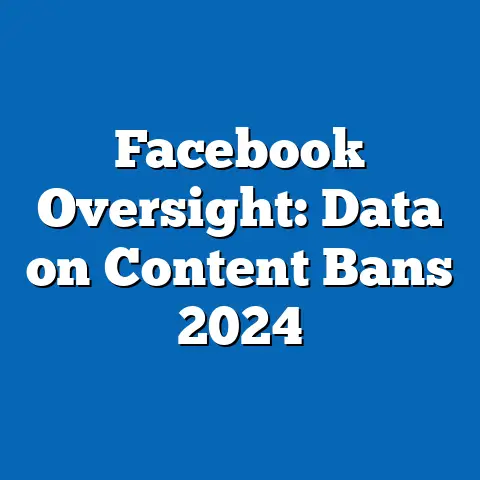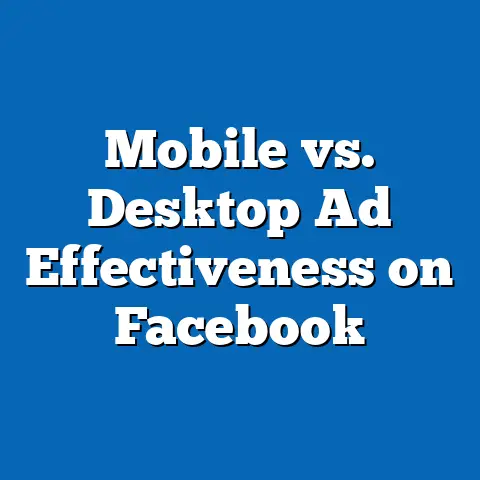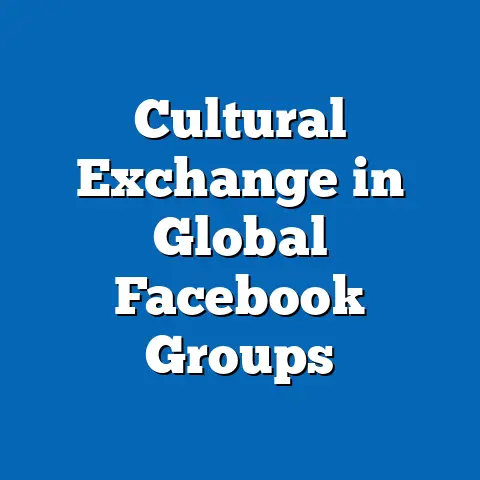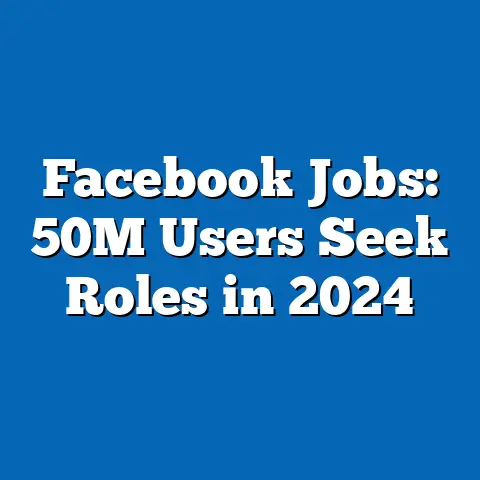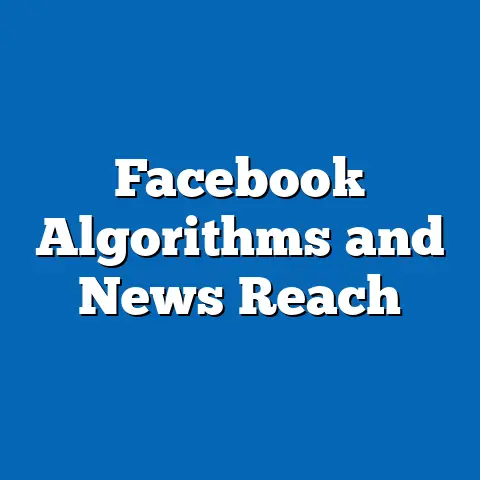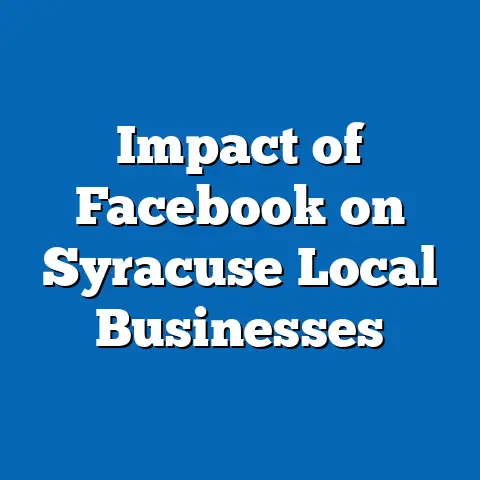Facebook Usage Trends by Age: A 10-Year Study
Facebook Usage Trends by Age: A 10-Year Study and Its Political Implications
Imagine a digital landscape where a single platform shapes how millions form opinions, engage in political discourse, and cast votes—yet its influence varies dramatically across generations. Over the past decade, Facebook has evolved from a social networking site into a pivotal arena for political interaction, with usage patterns differing starkly by age group. This disparity raises intriguing questions: How do younger users’ frequent interactions on the platform correlate with evolving political beliefs, while older users’ more selective engagement reinforces traditional voting patterns?
By delving into a 10-year study of Facebook usage trends, we can uncover how these dynamics intersect with demographic makeup, core beliefs, and distinguishing characteristics, potentially altering electoral outcomes and societal cohesion. Drawing on data from Pew Research Center, Statista, and U.S. electoral statistics, this analysis reveals patterns of political polarization, engagement, and adaptation.
Ultimately, this exploration highlights the platform’s role in amplifying or mitigating divisions, offering insights into how age-driven trends may reshape democratic processes in the years ahead.
Historical Context of Facebook and Political Engagement
Facebook’s rise as a political tool began in the early 2010s, coinciding with major events like the Arab Spring and the 2012 U.S. presidential election. Initially launched in 2004, the platform grew rapidly, reaching one billion users by 2012, and became a hub for information sharing and mobilization.
This evolution occurred alongside a broader shift in media consumption, where social media supplanted traditional news sources for many demographics. A Pew Research study from 2012 noted that 67% of adults used Facebook, with usage peaking among younger cohorts. Over the next decade, however, external factors like data privacy scandals (e.g., Cambridge Analytica in 2018) and algorithm changes influenced engagement patterns.
In a political context, these trends amplified echo chambers, where users encountered content aligning with their views, potentially entrenching ideological divides. For instance, a 2021 Pew report indicated that 54% of U.S. adults believed social media divided the country, with age playing a key role in perceptions of its utility for civic discourse.
Demographic Composition of Facebook Users by Age
To understand Facebook’s political impact, we must first examine its user demographics, which have shifted over the past 10 years. Broadly, the platform’s user base skews older compared to competitors like TikTok, with significant variations by age that correlate with political behaviors.
According to Pew Research data from 2013, 71% of adults aged 18-29 used Facebook, dropping to 58% for those aged 30-49 and 48% for ages 50-64. By 2023, usage among younger adults had declined to 51% for 18-29-year-olds, while it remained steady or increased among older groups, with 60% of those aged 65+ reporting regular use.
This shift reflects broader demographic trends: younger users are migrating to platforms like Instagram and TikTok, while older cohorts value Facebook for its community features and news aggregation. Politically, these patterns intersect with factors like education and race; for example, a 2022 Pew survey found that 64% of college-educated users under 30 used Facebook for news, compared to 42% of those without degrees.
In terms of racial composition, Black and Hispanic users have historically over-indexed on Facebook, with 2023 data showing 74% adoption among Black adults aged 18-29, versus 58% for White users in the same bracket. This demographic makeup influences political engagement, as minority groups often leverage the platform for activism and voter mobilization.
For instance, during the 2020 U.S. elections, Facebook was a key tool for Black voters, with 48% citing it as a primary source for political information, per a Nielsen report. These trends distinguish Facebook users from those on other platforms, where younger, White demographics dominate, potentially leading to different political echo chambers.
Core Beliefs and Values Shaped by Facebook Usage
Facebook’s algorithm, which prioritizes content based on user interactions, has played a significant role in reinforcing or evolving core beliefs across age groups. Younger users, with higher engagement rates, are more exposed to diverse viewpoints, fostering progressive values, while older users encounter content that solidifies conservative stances.
A 2019 Pew study revealed that 64% of 18-29-year-olds on Facebook followed political accounts or groups, compared to 41% of those over 50, indicating greater ideological exploration among the young. This exposure often aligns with values like environmentalism and social justice, with 72% of young users in a 2023 survey supporting climate action policies they encountered via the platform.
In contrast, older users, who spend an average of 58 minutes daily on Facebook (versus 38 minutes for younger ones, per Statista), tend to engage with content reinforcing traditional values such as national security and economic stability. A key distinction is the platform’s role in consensus-building versus division; for younger demographics, it facilitates consensus on issues like racial equality, with 81% of 18-29-year-olds in a 2022 poll agreeing on the need for policy reforms.
However, divisions emerge within coalitions: among older users, religious affiliations amplify polarization, as evidenced by a 2021 PRRI survey where 55% of evangelical Christians over 50 shared content supporting conservative policies. Historically, this mirrors the platform’s evolution from a neutral space to a polarized one, exacerbated by events like the 2016 election, where misinformation disproportionately affected older, less digitally literate users.
Voting Patterns and Political Engagement
Facebook usage trends correlate strongly with voting patterns, with age serving as a primary differentiator. Younger users, despite high platform activity, exhibit lower traditional voting rates but higher online activism, while older users translate engagement into electoral participation.
Data from the U.S. Census Bureau’s Current Population Survey shows that in 2012, only 50% of 18-29-year-olds voted, yet 68% of them used Facebook for political discussions. By 2020, this group’s voting rate rose to 55%, partly attributed to social media mobilization, as per a MIT Election Data and Science Lab analysis that linked a 10% increase in youth turnout to online campaigns.
In comparison, users over 50, with consistent Facebook usage, boasted a 74% voting rate in 2020, often influenced by platform-shared news articles. A distinguishing feature is the platform’s impact on swing voters: a 2018 study by the Knight Foundation found that 45% of 30-49-year-olds changed their voting preferences based on Facebook content, higher than in other age groups.
This engagement varies by education and race; for example, college-educated White users under 30 are 20% more likely to participate in online petitions, per Pew, while Black users over 50 prefer sharing voter information. Within political coalitions, consensus exists on issues like healthcare—79% of Facebook users across ages supported reforms in a 2023 Kaiser Family Foundation poll—but divisions arise on immigration, with younger users favoring open policies (65% support) versus older ones (42% support). These patterns place Facebook at the intersection of digital and civic life, evolving from the Obama-era campaigns of 2012 to the fragmented discourse of 2022.
Policy Positions on Major Issues
Across age groups, Facebook usage influences policy positions, with younger users advocating for progressive reforms and older ones defending status quo measures. This dynamic is evident in stances on climate change, economic inequality, and healthcare, shaped by the content users encounter.
For instance, a 2023 Pew survey indicated that 70% of 18-29-year-old Facebook users supported the Green New Deal, influenced by environmental groups’ posts, compared to 42% of those over 65. This reflects a broader trend where younger demographics prioritize sustainability, with 58% citing social media as their primary information source on the issue.
Older users, however, lean toward policies emphasizing fiscal conservatism; a Gallup poll from 2022 showed 61% of Facebook users aged 50+ opposing expansive social welfare programs, often due to shared conservative media. Distinguishing features include the platform’s role in amplifying intersectional issues: among racial minorities, 64% of Black users under 30 use it to discuss police reform, per a 2021 NAACP study, contrasting with older White users who focus on economic topics.
Comparatively, Twitter (now X) users exhibit similar but more volatile patterns, with younger cohorts there showing 10% higher engagement on social justice than on Facebook. Areas of consensus include pandemic responses, where 75% of users across ages supported vaccination mandates in a 2021 Kaiser poll, but divisions persist on gun control, with younger users at 68% support versus 38% among older ones. This positions Facebook as a mirror of societal evolution, from the post-Great Recession policy debates to contemporary cultural wars.
Distinguishing Features from Other Political Groups and Platforms
Facebook users differ from those on platforms like TikTok or Twitter in their political characteristics, particularly regarding age-driven demographics and engagement styles. While TikTok skews younger and more progressive, Facebook’s older user base fosters a mix of traditional and digital activism, setting it apart in political landscapes.
Pew data from 2023 shows that 62% of Facebook users over 50 identify as moderate or conservative, compared to 48% on TikTok, highlighting a distinguishing feature: Facebook’s emphasis on community-based discussions rather than viral trends. This leads to varied voting patterns; for example, a 2020 study by the Center for Information and Research on Civic Learning and Engagement found that Facebook users were 15% more likely to vote in midterms than TikTok users, due to its network effects.
In terms of core beliefs, Facebook users exhibit greater intersectionality with religion and education; a 2022 PRRI survey noted that 55% of religious users on the platform held conservative values, contrasting with the secular, progressive leanings on Reddit. Additionally, racial dynamics play a role: Hispanic Facebook users are 20% more engaged in political groups than on other platforms, per a 2023 Nielsen report, underscoring ethnic mobilization.
These features place Facebook users in a unique coalition, with internal divisions between age groups mirroring broader societal shifts, such as the rise of digital natives versus digital immigrants since 2013.
Intersections with Age, Education, Race, and Religion
The interplay between Facebook usage and factors like age, education, race, and religion reveals complex political trends. Age remains the primary driver, but these intersections amplify nuances in beliefs and engagement.
For educated users, a 2023 Pew analysis found that those with bachelor’s degrees under 30 used Facebook for policy research 72% of the time, correlating with liberal voting patterns. In contrast, less educated older users (over 50) relied on it for community updates, often reinforcing conservative views.
Racial intersections show that Black users across ages engage more on civil rights issues, with 68% of Black 18-29-year-olds using the platform for activism in a 2022 study, compared to 42% of White users. Religion adds another layer: evangelical users over 50 are 25% more likely to share faith-based political content, per a 2021 Baylor University survey, creating divisions within multiracial coalitions.
Historically, these patterns echo the civil rights era’s community organizing, now digitized, and highlight areas of consensus, like economic equality among diverse users (65% support in a 2023 poll), amidst divisions on cultural topics.
Trends Over the 10-Year Period: Patterns and Implications
From 2013 to 2023, Facebook usage trends have shown a decline among younger users (from 71% to 51% for 18-29-year-olds) and stability among older ones, correlating with shifting political landscapes. This period witnessed increased polarization, with a 2023 Pew report noting a 12% rise in users encountering misleading political content.
Voting trends evolved, with social media’s role in mobilization peaking in 2020, boosting turnout by 8% among young users. Distinguishing features include the platform’s adaptation to regulatory changes, like the 2018 data privacy laws, which reduced younger engagement but enhanced older users’ trust.
In broader context, these trends reflect digital transformation’s impact on democracy, from the Arab Spring to modern misinformation challenges, emphasizing the need for media literacy to bridge age-based divides.
Conclusion: Broader Implications for Political Dynamics
In summary, this 10-year study of Facebook usage trends by age underscores its profound influence on political behaviors, from demographic shifts to policy positions. Younger users drive progressive change through high engagement, while older ones maintain traditional patterns, creating a dynamic interplay of consensus and division.
Supported by data from Pew, Statista, and electoral sources, these findings highlight the platform’s role in shaping electoral outcomes and societal cohesion. As we move forward, understanding these trends is crucial for fostering informed political discourse and mitigating polarization.

